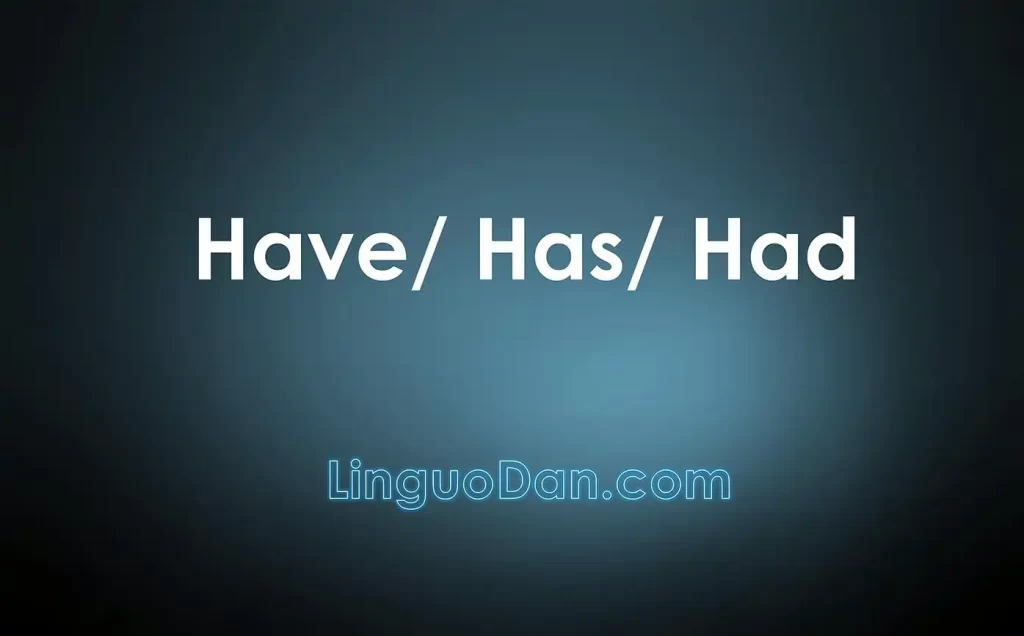What is the difference between have, has and had in English

The use of the verbs ‘have’, ‘has’ and ‘had’ in the different tenses of the English
Learning English requires understanding and correct use of grammar rules. One of the key aspects of grammar is learning the difference between the verbs “have,” “has,” and “had.” These words, belonging to one verb type, have their own specific forms and are used in different cases. In this article, we will look at the meaning and usage rules of each of these verbs so that you can more easily master their correct usage.
Have
- Have (verb in indefinite form)
“Have” is the infinitive form of this verb. It can be used with plural nouns or with the indefinite form of other verbs to form Present Perfect and Past Perfect verb constructions. Here are some examples:
- Present Perfect: “I have seen that movie before.”
- Present Perfect: “They have visited London many times.”
- Past Perfect: “She had already left when I arrived.”
Has
- Has (third person singular Present Simple)
“Has” is the third person singular (he, she, it) form of this verb in the Present Simple. Use “has” with singular nouns to form the present simple for the third person. Here are some examples:
- “She has a dog.”
- “He has a new job.”
- “It has a blue cover.”
Had
- Had (past tense)
“Had” is the past tense form of this verb and is used to form the Past Perfect. Past Perfect indicates an event that happened before another past event. Here are examples:
- “She had already eaten when he arrived.”
- “I had finished my work before the meeting started.”
Table of possible forms for the verbs “have,” “has,” and “had” in different tenses
A table of all possible forms for the verbs “have,” “has,” and “had” in different tenses
| Time/Person | Have (plural and first person singular) | Has (third person singular) | Had (past tense) |
|---|---|---|---|
| Present Simple | I have | She has | – |
| You have | He has | – | |
| We have | It has | – | |
| They have | – | ||
| Present Continuous | I am having | She is having | – |
| You are having | He is having | – | |
| We are having | It is having | – | |
| They are having | – | ||
| Present Perfect | I have had | She has had | – |
| You have had | He has had | – | |
| We have had | It has had | – | |
| They have had | – | ||
| Present Perfect Continuous | I have been having | She has been having | – |
| You have been having | He has been having | – | |
| We have been having | It has been having | – | |
| They have been having | – | ||
| Past Simple | – | – | I had |
| – | – | You had | |
| – | – | We had | |
| – | – | They had | |
| Past Continuous | – | – | I was having |
| – | – | She was having | |
| – | – | He was having | |
| – | – | It was having | |
| – | – | They were having | |
| Past Perfect | – | – | I had had |
| – | – | You had had | |
| – | – | We had had | |
| – | – | They had had | |
| Past Perfect Continuous | – | – | I had been having |
| – | – | She had been having | |
| – | – | He had been having | |
| – | – | It had been having | |
| – | – | They had been having |
In general, “have,” “has,” and “had” are verbs that indicate possession of something in the Present and Past and are used in different tenses to express an action. Understanding and using these verbs correctly will help you improve your English skills and communicate confidently at an English level. Practice using these verbs in different sentences to make your speech sound more natural.